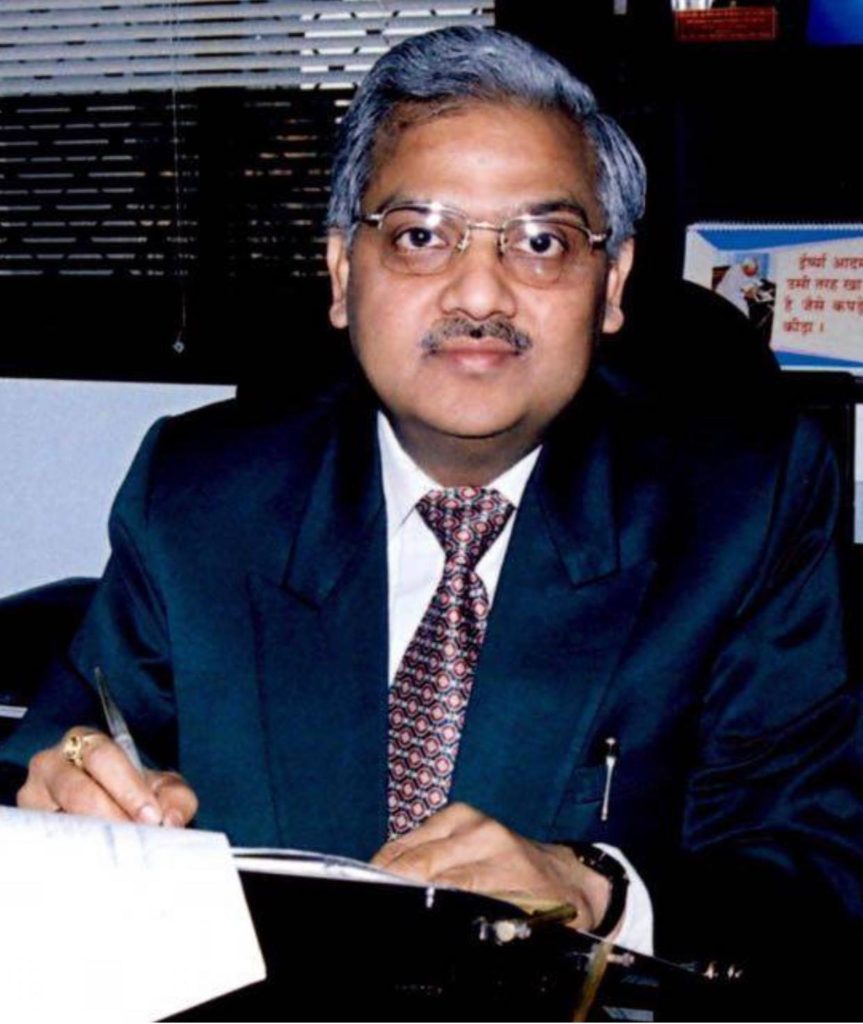Author of case is Dr. Girish Gupta, MD (Hom), PhD, Chief Consultant Physician, Lucknow (India)
Present Complaints:
A 65-year-old multiparous (G9 P5 A4) female patient Mrs. M.R. (M-06001/GB-617) reported on 22.2.19 for treatment of Cholecystitis with cholelithiasis with mild hepatomegaly with grade 1 fatty infiltration of liver with recurrent episodes of pain and distention of upper abdomen with nausea especially after meals better by belching and passing flatus.
Associated Complaints:
Discoloured, disfigured nail of both thumbs with subungual hyperkeratosis since 1998.
Diabetes mellitus
Past history:
Haemorrhoidectomy 30 years back
Ultrasonography Report (3.2.2019):
Gall bladder over distended with impacted calculus in neck region measuring 11 mm. GB walls thickened. Mild hepatomegaly with grade 1 fatty infiltration of liver.

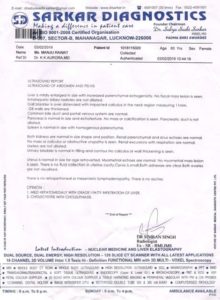
Rubrics for Repertorisation:
|
Sn. |
Rubrics |
Sn. |
Rubrics |
|
|
1. |
Anger easily |
8. |
Anxiety about trifles | |
|
2. |
Shrieking during anger |
9. |
Anticipatory anxiety | |
|
3. |
Desire for company |
10. |
Disposition to contradict | |
|
4. |
Obstinate |
11. |
Censorious | |
|
5. |
Dictatorial |
12. |
Suspiciousness | |
|
6. |
Egotism |
13. |
Desire for spicy food | |
|
7. |
Aggravation from consolation |
14. |
Heat of palms |
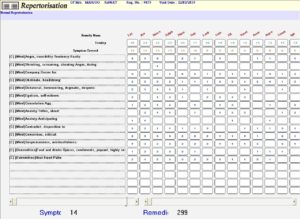
Result of Repertorisation:
| Remedies |
Lyco |
Ars alb |
Nux vom |
Sulph |
| Totality |
25 |
23 |
22 |
22 |
| Symptoms covered |
12/14 |
12/14 |
13/14 |
11/14 |
Medicine selected:
Lycopodium clavatum
Justification of Prescription:
| Anger easily | Anticipatory anxiety | |
| Dictatorial | Suspiciousness | |
| Egotism |
Date-wise Follow-up:
February 22, 2019: Lycopodium 30 single dose once a week followed Chelidonium Q 10 drops TDS for 8 weeks.
April 21, 2019: Distension of abdomen reduced but recurrent pain in upper abdomen persisted. Same prescription was repeated for 4 weeks along with Colocynthes 30 after meals.
May 27, 2019: Patient clinically asymptomatic. Same prescription was repeated for 4 weeks. Repeat ultrasonography of abdomen was advised.
Ultrasonography Report (30.6.2019):
Gall bladder is normal in size with anechoic lumen. No calculus or wall thickening of gall bladder seen. Liver is normal in size with homogeneous parenchyma.
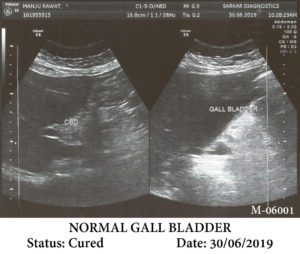
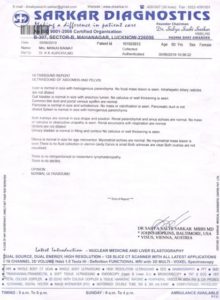
Duration of Treatment: 4 months.
Discussion:
Lycopodium has been selected as similimum on the basis of totality of symptoms but Chelidonium Q was also prescribed. As per homoeopathic literature Chelidonium Q is a known bile thinner hence used along with indicated remedy. Dr. Nash has mentioned in his materia medica that Chelidonium a right sided remedy and stands close to Lycopodium and is often found indicated after the other.1 Intercurrent use of Colocynthes 30 is justified because she used to take various allopathic medicines to get relief in abdominal pain and flatulence. It shows homoeopathic medicines are also effective to take care of pain, flatulence and indigestion etc.
A review article entitled ‘Mechanism of action of herbal cholagogues’ states that numerous herbs and plants denoted as cholagogues (promoting the flow of bile from the liver and gall bladder into the intestines) and choleretics (increasing bile production) are used as traditional medicines against liver complaints. These have been claimed to exert a beneficial action against hepatobiliary diseases and cholestasis.2 In a study conducted in 1995, Vahlensieck et. al. demonstrated the cholagogic and choleretic activity of total ethanolic extract of the herb of Chelidonium majus L. (Papaveraceae) causing increase in the bile acid independent flow (BAIF) in isolated perfused rat liver.3
Rentz in his article entitled ‘The mechanism of action of some herbal remedies used for liver and gallbladder disorders (berberis, chelidonium, chelone)’ concluded that berberis and chelidonium cause an increase in the amount of bile in guinea pigs while in rats the effect is regarded as a cholekinetic. The qualitative similarity of the effects of berberis and chelidonium i.e. increased tone and improvement of contractions of the isolated small intestine with almost simultaneous weakening of the acetylcholine effect suggests that berberine, which is also contained in chelidonium is the most effective agent and has a choletic effect on guinea pigs.4
In a clinical study, conducted on 316 well-diagnosed cases of cholelithiasis, Gupta and Singh demonstrated the positive outcome of treatment by homoeopathic medicines, removing the myth not only from the mind of public but also physicians and surgeons that gall bladder cannot be dissolved. Although the percentage of dissolution of gall stone in response to homoeopathy is not very high. Nevertheless, it gives a ray of hope to paediatric and geriatric patients suffering from diabetes, hypertension and other systemic diseases where surgical procedure is deferred due to high risk.5
References:
-
- Nash EB. (1898) Chelidonium majus. Leaders in homoeopathic therapeutics with grouping and classification. B. Jain Publishers (P) Ltd., 2006: 306-308.
- Spiridonov NA. (2012) Mechanisms of action of herbal cholagogues. Med Aromat Plants 1:107. (doi:10.4172/2167-0412.1000107)
- Vahlensieck U, Hahn R, Winterhoff H, Gumbinger HG, Nahrstedt A, Kemper FH. (1995) The effect of Chelidonium majus herb extract on choleresis in the isolated perfused rat liver. Planta Medica, 61(3): 267-271. (doi: 10.1055/s-2006-958070)
- Rentz, E. (1948) Zum Wirkungsmechanismus einiger bei Leber- und Gallenleiden angewandter pflanzlicher Mittel (Berberis, Chelidonium, Chelone). Naunyn – Schmiedebergs Arch 205, 332–339 (1948). (doi.org/10.1007/BF00244828)
- Gupta G, Singh S. (2014) Evidence based clinical study in cases of cholelithiasis in response to homoeopathic treatment. Asian Journal of Homoeopathy, Vol. 8, No. 3 (28): 27-37.
Inference:
This case shows the effectiveness of homoeopathic medicine Lycopodium in the treatment of gall bladder calculus prescribed on holistic basis. The message by reporting this case is to inculcate confidence in homoeopathic physicians to have firm belief in homoeopathic philosophy i.e. “treat the person in disease”.

